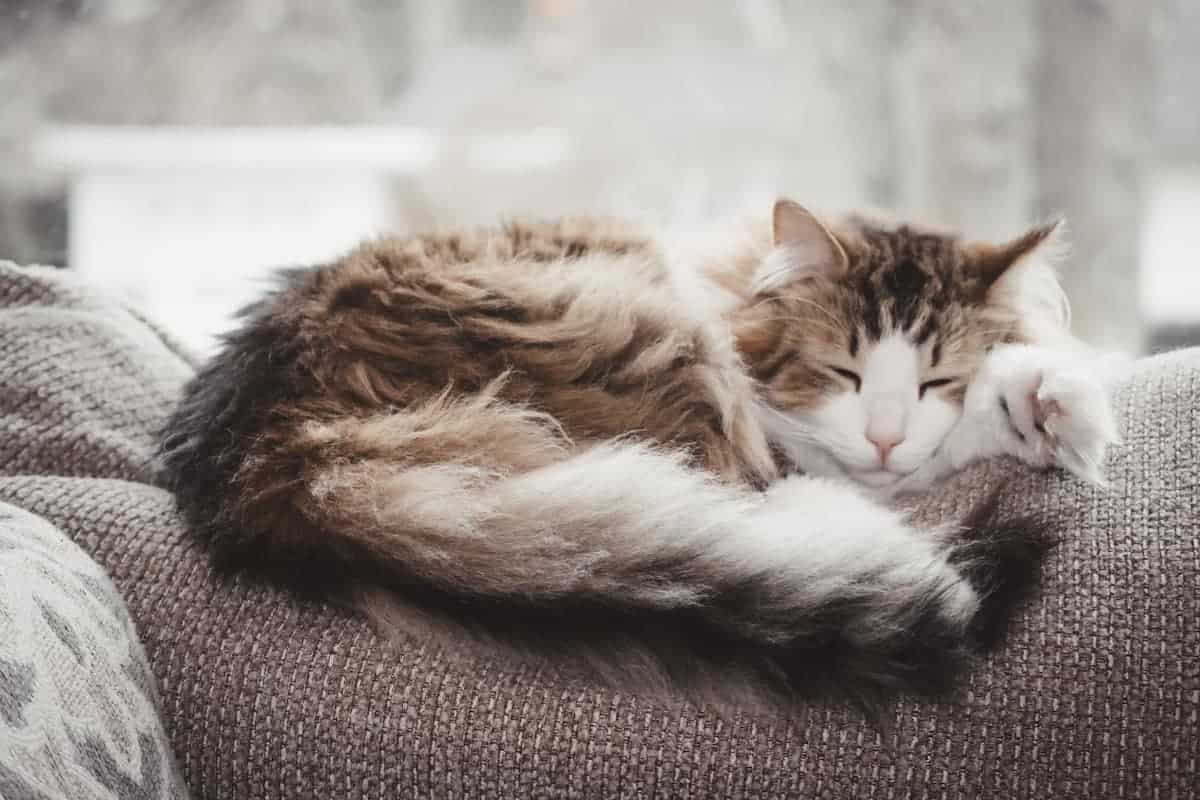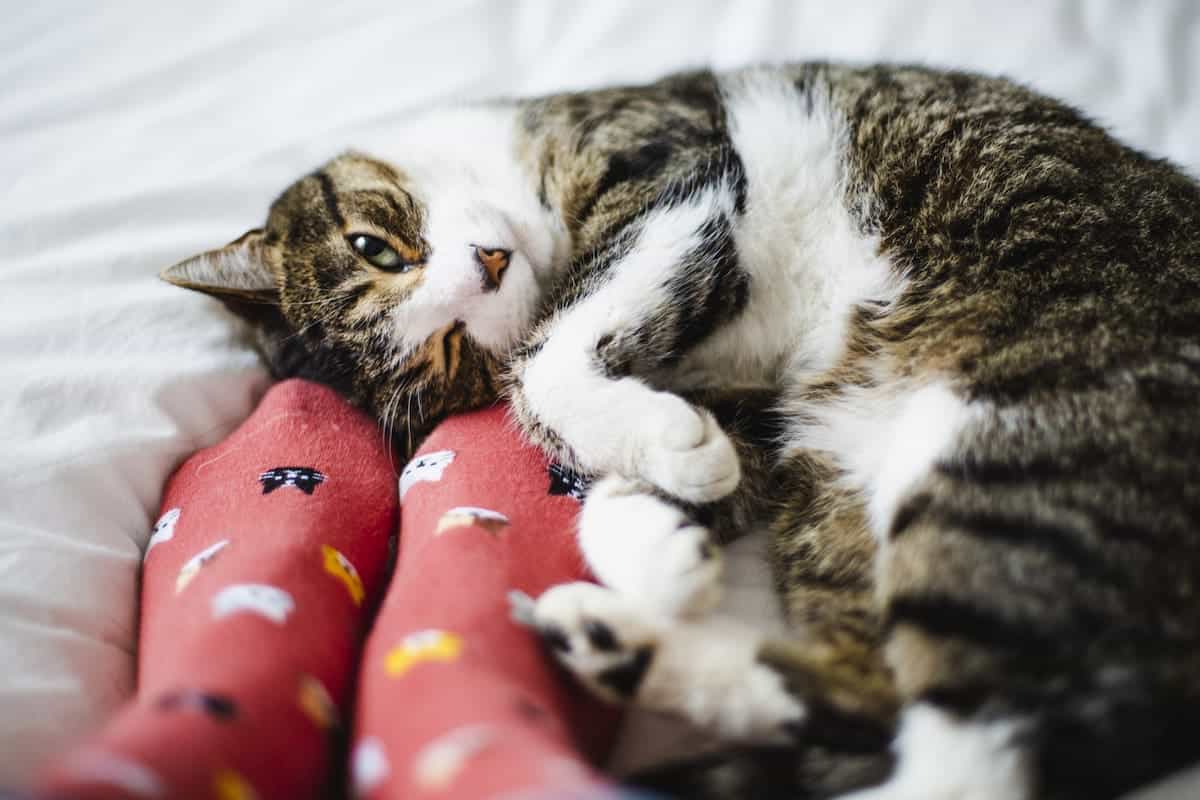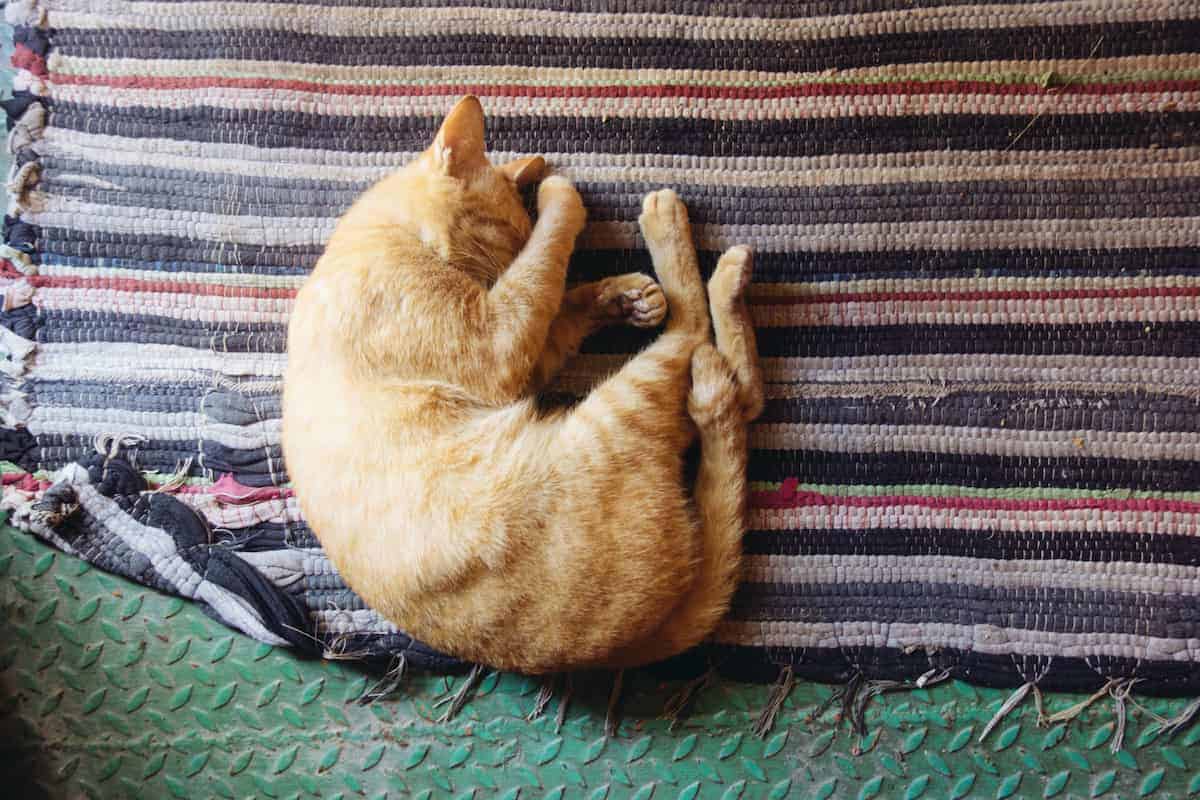Cats are famously known for their love of sleep, but have you ever wondered if cats sleep more in the winter? This article will provide an in-depth exploration of feline sleep patterns and what adjustments may be necessary to keep your cat well-rested during colder months.
What is the Sleep Pattern of Cats?
Unlike humans, cats tend to be naturally polyphasic sleepers, meaning they take multiple short naps throughout the day. According to Simone Davis of The Veterinary Clinic, “Cats can sleep anywhere between 12 and 16 hours per day.” Despite being nocturnal animals, cats will usually alternate between one to four hour naps throughout the day, followed by one longer sleep period sometime during the night.
Cats are also known to be light sleepers, meaning they can easily be woken up by loud noises or sudden movements. This is why cats often sleep in places that are safe and secure, such as in a corner or on a high shelf. Cats also tend to sleep in areas that are warm and comfortable, such as on a bed or a couch.
Exploring the Reasons Behind Feline Sleep Patterns
Cats’ natural sleeping behavior can be attributed to their wild origins. When it comes to hunting and scavenging for food, cats have adapted over time to take many small naps in between peaks of activity. This gives cats the opportunity to be mostly active during huntable hours, such as dawn and dusk, but also allows them to conserve energy and rest between bouts of activity.
In addition to their wild origins, cats’ sleep patterns are also influenced by their domestication. Domestic cats are often more relaxed and less active than their wild counterparts, and as a result, they tend to sleep more. Domestic cats may also be more likely to sleep in one place for longer periods of time, as they are not as concerned with potential predators or other dangers. This allows them to get more restful sleep and wake up feeling more refreshed.
Effects of Temperature on Cat Sleep
In addition to their genetics, cats may adjust their sleeping patterns in response to changes in temperature. On days with higher temperatures, cats tend to sleep less and may become more active during the day. But when temperatures drop, cats may use increased sleep to conserve energy and stay warm, resulting in longer and more frequent naps.
Cats may also seek out warm spots in the house to sleep in, such as near a sunny window or on top of a warm appliance. Additionally, cats may curl up in a tight ball to conserve body heat, or even sleep with other cats to share warmth. By understanding the effects of temperature on cat sleep, pet owners can help ensure their cats are comfortable and well-rested.
The Impact of Daylight on Cat Sleep
Changes in daylight can also play a role in influencing cat sleeping habits. An increase in available light during the spring and summer months may naturally promote activity in cats, while shorter days during the winter can cause cats to sleep more. In other words, shifts in daylight can affect cats’ internal clock and sleeping behavior.
Cats may also be more active during the day when there is more light available. This is because cats are naturally crepuscular, meaning they are most active during the twilight hours of dawn and dusk. When there is more daylight, cats may be more inclined to be active during the day, rather than at night.
Understanding Cats’ Natural Circadian Rhythm
Cats possess their own circadian rhythm, or sense of time, which helps them determine when to be active and when it is appropriate to sleep. This is also influenced by their environment. For example, cats may become more active during peak periods of daylight and at times when their humans are more active. A disruption to a cat’s circadian rhythm can cause them to become unsure of when it is okay to sleep and when it is time to be awake.
It is important to create a consistent routine for cats to help them maintain their natural circadian rhythm. This includes providing them with a comfortable and safe sleeping area, as well as providing them with plenty of opportunities for physical and mental stimulation during the day. Additionally, providing cats with access to natural light can help them to better understand when it is time to be active and when it is time to rest.
What is a Normal Amount of Sleep for a Cat?
The amount of sleep a cat needs varies depending on the individual. Some cats may need upwards of 16 hours of sleep per day, while others may only require eight or fewer. A healthy amount of daily sleep usually falls somewhere in between these two extremes.
It is important to note that cats are crepuscular animals, meaning they are most active during the twilight hours of dawn and dusk. This means that cats may sleep more during the day and be more active at night. It is also important to provide cats with a comfortable and safe sleeping environment, such as a soft bed or blanket, to ensure they get the rest they need.
How to Help Your Cat Get Healthier Sleep During Winter
During the winter, you can help your cat get healthier sleep by providing a comfortable area to rest where it’s not too cold or too hot. Ensuring that your cat has plenty of warm bedding may also help keep warm air trapped around their body during colder nights.
Tips for Keeping Your Cat Well-Rested During Colder Months
Here are a few additional tips for keeping your cat well-rested during the winter:
- Provide plenty of cozy blankets and warm bedding for your cat to curl up in.
- Ensure that your cat has access to plenty of food and water before bedtime.
- Try to keep your home as quiet as possible around bedtime.
- Schedule regular playtime sessions throughout the day.
- Keep a consistent feeding schedule.
Summary
Understanding your cat’s natural sleep patterns and rhythms can help you provide better care for it. With winter comes colder temperatures, reduced daylight hours, and an increase in cats’ sleeping habits; however, understanding the why behind their behavior and taking preventive measures can ensure that your cat stays healthy and well-rested across all seasons.





